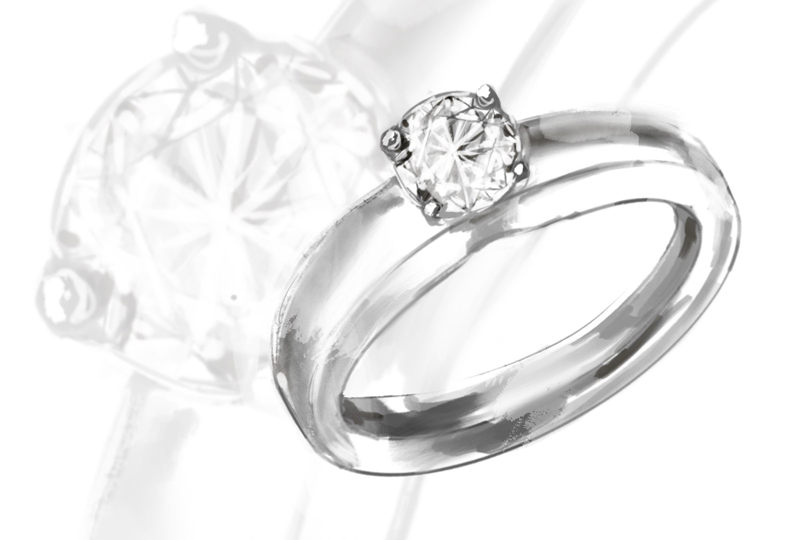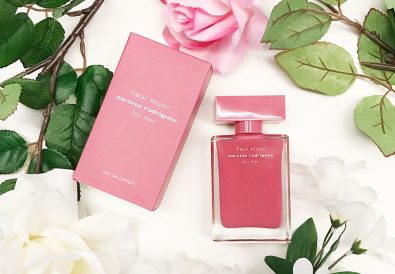Part of an ongoing series of 29Secrets stories, taking a deep dive into the history of legendary beauty products and iconic fashion moments…
By Christopher Turner
Illustration by Michael Hak
Engagement rings, traditionally worn on the fourth finger of the left hand, have seemingly always been a visible token of love, commitment and partnership. But the history of engagement rings isn’t really a simple tale of adornment; it spans thousands of years and kicks off with some dated and fundamentally sexist traditions. And, like many traditions, the exact origins are up for debate.
Today engagement rings may be synonymous with marriage and love, but at one point they were nothing more than a mark of ownership. Most anthropologists agree that the concept of engagement rings originated with the ancient Romans, when women wore rings attached to small keys, indicating their husbands’ ownership. It wasn’t until 850 CE that the engagement ring was given an official meaning, when Pope Nicholas I (also known as Nicholas the Great) declared the engagement ring to be a symbol of a man’s intent to marry a woman.
As for the trademark sparkle we usually associate with engagement rings, the first diamond engagement ring on record was given in 1477, although diamonds didn’t truly enter the mix until the late 1940s, thanks to De Beers and the power of a good marketing slogan.
Read on for a deeper dive into the surprising origins, transformations and significance of engagement rings throughout history.
Ancient origins
Some anthropologists believe that the engagement ring, like so many other fashionable customs and traditions, can be traced at least partially back to ancient Egypt, where rings were thought to symbolize eternity. Interestingly, Egyptians believed that a circle – with no beginning or end – represented everlasting love.
In ancient Egypt, rings were made from simple materials like braided reeds, hemp or leather, and were often worn on the “ring finger” of the left hand because of a belief that this finger contained the “vena amoris,” a vein thought to connect directly to the heart. The Egyptians believed that a ring worn on this finger could ignite eternal love.
The engagement ring can be traced more reliably to ancient Rome, where men gave “betrothal rings” or “annulus pronubus” to their brides-to-be as a public declaration of their intention to marry. But its symbolism wasn’t so much about love as it was ownership. Roman women would wear rings of ivory, flint, bone or copper “to signify a business contract or to affirm mutual love and obedience” to men, according to the Gemological Institute of America (GIA). Later, these symbolic rings were made from iron, signifying strength and permanence; then, as wealth increased, gold rings were introduced.
The double-ring ceremony, where both bride and groom exchanged rings, was also a Roman innovation that influenced future traditions.
Notably, Roman law required a legal exchange of some kind to signify the contract of marriage, and engagement rings played a role in this formalization. The presentation of a ring, often alongside other valuable goods, was meant to prove the man’s serious intent and ability to provide, offering a material guarantee of sorts against any breach of promise.
While not exactly romantic, this tradition continued, slightly changing over time. A gold ring on a woman’s hand eventually became a symbol of a man’s intent to marry her, and these rings were often engraved with motifs like clasped hands or keys, signifying the trust and commitment required in marriage.
The dawn of the diamond
By the medieval period (which spans roughly from the end of the Roman Empire in the 470s to the 1400s), the concept of engagement rings began to take on deeper symbolic meanings. In 850, Pope Nicholas I officially declared that engagement rings were a symbol of a man’s intent to marry, and they were used as a representation of financial sacrifice.
It’s also near the end of this medieval era when the first diamond engagement ring was used.
The first-ever diamond engagement ring on record was given in 1477, when Archduke Maximilian of Austria in the imperial court of Vienna presented Mary of Burgundy with a diamond ring upon their engagement. A letter written to Maximilian before he proposed read, “At the betrothal, your Grace must have a ring set with a diamond and also a gold ring.”
The gold ring was set with thin, flat pieces of diamonds in the shape of an “M.” During this period, diamonds were prized not only for their beauty but also for their rarity, as many throughout medieval Europe believed that diamonds, formed under immense pressure deep within the earth, held magical powers; they were thought to ward off evil and protect the wearer.
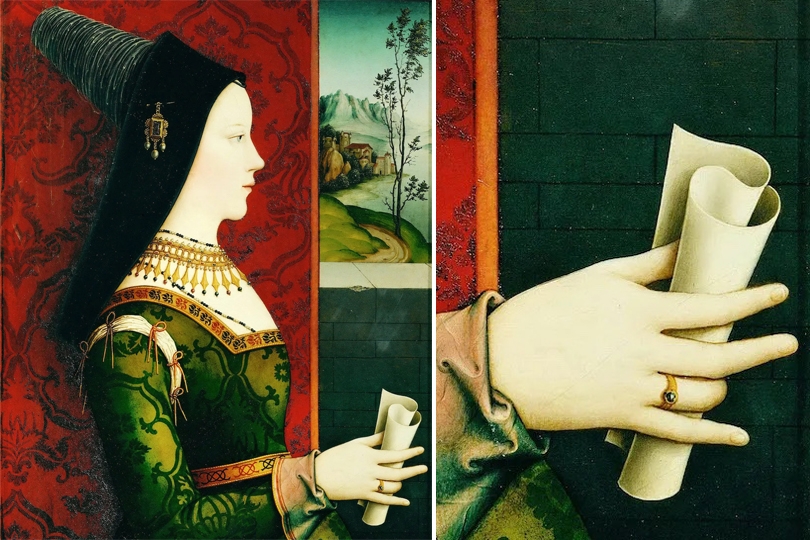
The archduke’s use of a diamond in a ring sparked a bit of a trend among European nobility and aristocracy, and jewellers began adding more precious gems to their jewellery. This set the stage for engagement rings to embody some the symbolism of intertwined unity that we think of today.
Sentiment and style
The Renaissance era (generally described as taking place from the 14th to the 17th century) marked a period of immense creativity and craftsmanship, which extended to the design of engagement rings. The popularity of engagement rings grew during this time period, particularly among the European elite. Rings during this period became more ornate, incorporating complex metalwork and a combination of different gemstones. Motifs were drawn from mythology and nature, with images of flowers, birds and celestial bodies frequently appearing.
In 1525 Europe, gimmel (or gimmal) engagement rings became all the rage, after German theologian, professor, pastor and church reformer Martin Luther commissioned a two-hoop ring for his engagement to an ex-nun named Katharina von Bora. A gimmel ring (pronounced gim-uhl) is a ring with two or three separate bands that link together to form a completed ring when assembled. Martin and Katharina each wore one part of the ring until their marriage that same year, when the bands were joined on Katharina’s finger during their wedding ceremony on June 13, 1525.
Gimmel rings led to jewellers crafting engagement rings with floral patterns, which became commonly known as posey rings, which were engraved with romantic poetic phrases, biblical quotes or personal messages of love. Gemstones that were incorporated into these designs were also chosen for their perceived qualities: rubies symbolized passion, sapphires symbolized fidelity, and emeralds symbolized hope.
Moving into the Victorian era (the period between approximately 1820 and 1914, corresponding roughly but not exactly to the period of Queen Victoria’s reign over Great Britain from 1837 to 1901), Queen Victoria’s own love story greatly influenced the style and sentimentality of engagement rings. Her engagement to Prince Albert in November 1839 was marked by a ring shaped like a serpent, set with an emerald (her birthstone). At the time, snakes were seen as symbols of eternity and wisdom. This sparked a trend for engagement rings that incorporated unique shapes and symbolic motifs.
Victorian engagement rings were often characterized by elaborate designs featuring a mix of diamonds, coloured gemstones and intricate goldwork. They embraced a romantic and whimsical aesthetic, with motifs such as hearts, flowers, bows and even initials or names of the lovers. Rings were often fashioned into clusters, with a central gemstone surrounded by smaller ones, creating a floral or starburst effect.
Elegance and innovation
The Edwardian era (a period in the early 20th century that spanned the reign of King Edward VII of Great Britain from 1901 to 1910) marked a period of refinement and elegance in jewellery design. Engagement rings from this era often featured filigree patterns, milgrain details and the use of platinum – a stronger and more versatile metal than gold, allowing for more intricate and delicate settings. Diamonds were still the preferred gemstone, often set with smaller stones in lacy, intricate settings inspired by the period’s fascination with the Belle Époque style, which emphasized opulence, grace and a sense of lightness.
The 1920s and 1930s brought a dramatic shift in style, influenced by modernism, technological advancements and social changes. The Art Deco movement flourished throughout Europe and North America and saw engagement rings characterized by bold geometric designs, clean lines, and the use of contrasting gemstones and colours. Art Deco rings often featured diamonds in unusual cuts – such as emerald, baguette and marquise cuts – alongside coloured stones like sapphires, emeralds and rubies. Platinum remained popular, but new materials, such as white gold, were also introduced.
In North America, the popularity of extravagant engagement rings, especially diamond engagement rings, declined after World War I, even more so than after the onset of the Great Depression in 1929. While the Great Depression saw a decline in the extravagance of engagement rings due to economic hardship, the innovative spirit of the Art Deco period left a lasting influence.
Diamonds become the standard
The 20th century witnessed the most significant transformation in the history of engagement rings, mostly due to the marketing efforts of the diamond industry.
In 1880, shortly after diamonds were discovered in South Africa, Cecil Rhodes founded the De Beers Mining Company with several other investors, and within the decade the prominent British company controlled about 90 per cent of the world’s diamond production. Following the Great Depression of the 1930s, the price of diamonds collapsed and the popularity of diamond rings plummeted. So De Beers launched a marketing campaign that, according to the GIA, had the sole intent of persuading the consumer that an engagement ring was indispensable, and that a diamond was the only acceptable stone for an engagement ring.
De Beers introduced their iconic “A Diamond is Forever” campaign in 1947. The phrase had been coined by a young copywriter named Mary Frances Gerety. Gerety worked for De Beers’ publicity agency, N. W. Ayer & Son in Philadelphia, at a time when diamonds were a man’s industry, and she singlehandedly came up with the slogan that would revolutionize an industry that had barely survived the Great Depression and World War I.
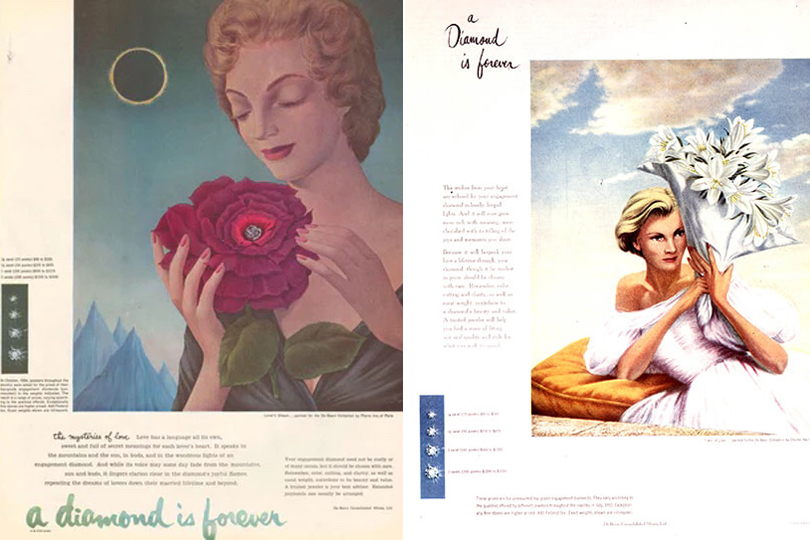
Four years into her career at N. W Ayer, Gerety wrote down the four iconic words, and presented her campaign idea to her colleagues the next day. Initially, her pitch was met with hesitancy due to its unusual style. However, it was this line that would transform both the diamond and the advertising industries. Gerety’s “A Diamond is Forever” slogan embedded the idea of a diamond engagement ring in the minds of North American customers and consumers around the world. In fact, years later the slogan was voted by Advertising Age as the advertising slogan of the 20th century.
De Beers also started courting celebrities to wear diamonds, and reinforced the idea that diamonds weren’t just a symbol of romance but also works of art. The advertising campaign paired with celebrity endorsements had a tremendous response, and diamonds became aspirational. Almost instantly, they became the ultimate symbol of love and commitment, suggesting that a diamond’s durability and brilliance mirrored the strength and clarity of true love. It should come as no surprise that by the end of the decade, diamond engagement rings had become the leading line of jewellery in most department stores across North America.
Simultaneously, the notion that an engagement ring should cost “two months’ salary” became a common guideline, further linking the financial investment in a diamond ring to the depth of one’s commitment.
How much of a commitment? Between 1939 and 1979, the sales of diamonds in the United States rose from $23 million to $2.1 billion. And that was just the beginning.
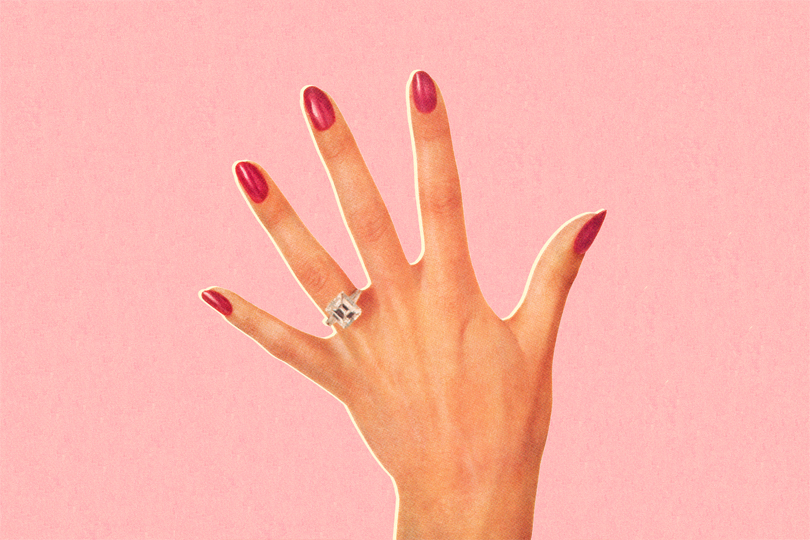
A legacy of love
Through the following decades, the engagement ring market skyrocketed and slowly became more diverse and personalized, reflecting changing social norms and values. While diamond rings remain popular, there is a growing trend towards alternative stones, such as sapphires, emeralds and even unconventional options like morganite or black diamonds. Coloured gemstones and unique cuts are increasingly favoured by those who want their rings to stand out. Customization is now a key element in choosing an engagement ring, with many couples seeking rings that reflect their unique love stories, family heritage or personal tastes. Vintage and antique rings have also seen a resurgence, with many people drawn to their intricate designs, historical significance and sustainability.
The emphasis on ethical sourcing and sustainability has also grown significantly in recent years. Many couples are now choosing conflict-free diamonds or lab-grown diamonds, which offer an alternative to traditional mining practices. Ethical considerations extend to the use of recycled metals and support for artisans who employ fair trade practices.
It’s fair to say that engagement rings have undergone an extraordinary evolution, from simple bands declaring ownership to the dazzling diamond creations of today. Statistics indicate that today more than 80 per cent of North American brides receive a diamond engagement ring, proving that despite the changes in materials, styles and social meanings, the core essence of the engagement ring remains the same: a powerful symbol of love, commitment and the promise of a shared future. Of course, it’s safe to say that as we move forward, the tradition of the engagement ring will continue to adapt, reflecting the diversity and individuality of love in the modern world.
![]()
Want more? You can read other stories from our The Story Of series right here.

